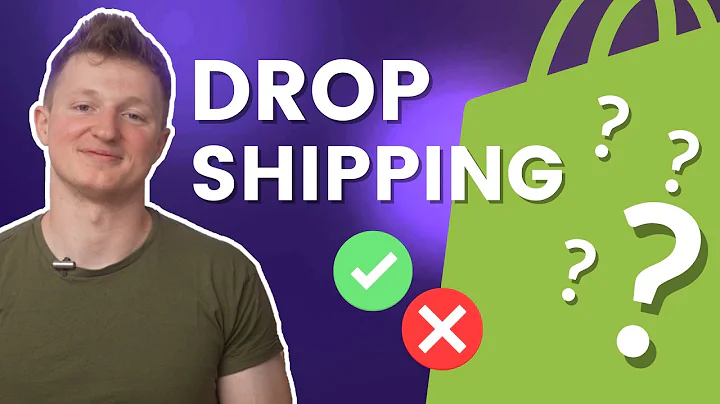Découvrez comment ce livre m'a rapporté 13,461€ en dropshipping
Table of Contents
- Introduction
- The Power of Influence and Manipulation in E-commerce
- 2.1 The book "Influence and Manipulation" by Robert Cialdini
- 2.2 Why this book is recommended for e-commerce professionals
- The Six Levers of Influence in E-commerce
- 3.1 Lever 1: Reciprocity
- 3.2 Lever 2: Scarcity
- 3.3 Lever 3: Commitment and Consistency
- 3.4 Lever 4: Social Proof
- 3.5 Lever 5: Liking and Friendship
- 3.6 Lever 6: Authority
- Applying the Levers of Influence in E-commerce
- 4.1 Lever 1: Offering Something of Value
- 4.2 Lever 2: Creating a Sense of Scarcity
- 4.3 Lever 3: Promoting Engagement and Commitment
- 4.4 Lever 4: Utilizing Social Proof
- 4.5 Lever 5: Building Customer Relationships
- 4.6 Lever 6: Establishing Authority
- Conclusion
The Power of Influence and Manipulation in E-commerce
In the world of e-commerce, understanding the art of persuasion and influence is crucial for success. One book that stands out in this realm is "Influence and Manipulation" by Robert Cialdini. This book has become a bible of sales for many e-commerce professionals, providing valuable insights into the psychology behind effective selling strategies. Whether you want to learn how to create compelling product descriptions, captivating Facebook ads, or persuasive videos, this book offers a wealth of knowledge.
The Six Levers of Influence in E-commerce
Cialdini's book highlights six key levers of influence that are highly effective in e-commerce. These levers have the power to sway customers and drive them towards making a purchase. Understanding and implementing these levers can significantly improve your marketing and sales efforts.
Lever 1: Reciprocity
Reciprocity plays on the basic human instinct to repay a favor. By offering something of value to your customers, such as a free guide or video, you can create a sense of reciprocity. This not only helps in building customer loyalty but also encourages repeat purchases.
Lever 2: Scarcity
Scarcity is a powerful motivator that drives people to take action. By creating a sense of limited availability or time-sensitive offers, you can instill a fear of missing out in your customers. This urgency can push them to make a purchase sooner rather than later.
Lever 3: Commitment and Consistency
Once someone makes a commitment or takes a public stance, they tend to stay consistent with that commitment. By getting your customers to make small commitments, such as subscribing to a newsletter or joining a loyalty program, you can increase their likelihood of making future purchases.
Lever 4: Social Proof
People are more likely to trust and follow the actions of others. By showcasing positive reviews, testimonials, and user-generated content, you can leverage social proof to build trust and credibility. This, in turn, can influence potential customers to make a purchase based on the positive experiences of others.
Lever 5: Liking and Friendship
Building a likable brand and establishing a sense of friendship with your customers can go a long way in influencing their buying decisions. By creating engaging and relatable content, you can foster a connection with your audience, making them more inclined to make a purchase.
Lever 6: Authority
People generally trust and respect figures of authority. By positioning yourself as an expert or aligning your brand with recognized authorities in your industry, you can gain credibility and influence over your customers. This can ultimately drive them to choose your products over competitors.
Applying the Levers of Influence in E-commerce
To effectively implement these levers of influence, consider the following strategies:
Lever 1: Offering Something of Value
Provide your customers with valuable resources or incentives, such as free guides, ebooks, or exclusive discounts. This not only helps in capturing their contact information but also establishes reciprocity and a sense of goodwill.
Lever 2: Creating a Sense of Scarcity
Utilize limited-time offers, flash sales, or limited stock availability to create a sense of urgency. Highlight the scarcity of certain products or promotions to encourage customers to act quickly.
Lever 3: Promoting Engagement and Commitment
Encourage customers to interact with your brand by subscribing to newsletters, joining loyalty programs, or participating in contests. By getting them to make small commitments, you increase the likelihood of future purchases.
Lever 4: Utilizing Social Proof
Display positive reviews, testimonials, and user-generated content prominently on your website. Implement social sharing buttons to encourage customers to share their positive experiences with others. This helps build trust and influence potential customers.
Lever 5: Building Customer Relationships
Focus on creating a connection with your customers through personalized interactions, engaging content, and exceptional customer service. By fostering a sense of liking and friendship, you increase the chances of repeat purchases and word-of-mouth referrals.
Lever 6: Establishing Authority
Position your brand as an authority in your industry by showcasing expertise, certifications, or partnerships with well-known figures or organizations. Leverage influencers or industry experts to endorse your products and services, further strengthening your authority.
In conclusion, leveraging the power of influence and manipulation can greatly enhance your e-commerce success. By understanding and implementing the six levers of influence, you can effectively engage and persuade customers, ultimately driving sales and business growth.
Highlights:
- Understanding the psychology behind effective selling in e-commerce.
- The six levers of influence: reciprocity, scarcity, commitment, social proof, liking, and authority.
- Strategies to apply each lever in e-commerce, including offering value, creating scarcity, promoting engagement, utilizing social proof, building customer relationships, and establishing authority.
FAQ:
Q: How can I create a sense of scarcity in e-commerce?
A: You can create a sense of scarcity by offering limited-time promotions, showcasing low stock levels, or utilizing flash sales.
Q: How important is building customer relationships in e-commerce?
A: Building strong customer relationships is crucial in e-commerce as it fosters loyalty, repeat purchases, and word-of-mouth referrals.
Q: How can I establish authority in my e-commerce business?
A: You can establish authority by showcasing expertise, certifications, and partnerships with recognized figures or organizations. Utilizing endorsements from influencers or industry experts can also enhance your authority.



















